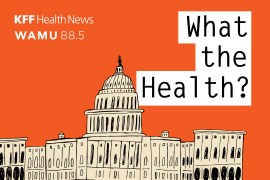If your doctor can’t see you now, maybe the nurse practitioner can.
Nurse practitioners have long been a reliable backstop for the primary-care-physician shortfall, which is estimated at nearly 21,000 doctors this year and projected to get worse.
But easy access to NPs could be tested in coming years. Even though nearly 90 percent of nurse practitioners are certified to work in primary care, only about a third choose the field, according to a recent study.
Health-care workforce experts worry that NPs are being lured toward work in specialty practices for the same reason that some doctors steer clear of primary care: money.
“We get what we pay for,” said Candice Chen, an associate professor of health policy and management at George Washington University.
Physicians must do a residency and usually a fellowship, and pass muster with a national certifying body to practice in a specialty such as oncology or endocrinology. But NPs generally don’t need to be endorsed by a standard-setting group before transitioning to specialty care.
There are advanced programs in specialties such as endocrinology or dermatology that they can enroll in if they wish, but it’s not required.
There’s not much data on salary differences among NPs, but according to AMN Healthcare Physician Solutions, a staffing firm, specialist NPs and physician assistants make about $6,000 more annually on average than those in general practice.
In Yankton, S.D., nurse practitioner Raina Hoebelheinrich is studying for a certificate in endocrinology from a local university to boost her knowledge and increase treatment options for patients with diabetes who otherwise may have to drive hundreds of miles to see a specialist.
“I’ve experienced firsthand with family members the difficulty getting in to receive this type of care,” she said.
She said she’s not sure how she’ll use her new skills. But they’ll surely expand her employment options, even in rural America.
There’s not a lot of data, but some evidence points to nurse practitioners moving away from primary care. The Milbank Memorial Fund’s 2024 primary care scorecard found that between 32 and 34 percent of NPs worked in primary-care practices from 2016 to 2021.
Meanwhile, “nurse practitioner” is one of the fastest-growing occupations, according to the federal Bureau of Labor Statistics, projected to grow 45 percent and add 123,600 jobs by 2032. The staffing firm AMN says NPs have been the most requested position search from their clients for three years running.
Atul Grover, executive director of the Research and Action Institute at the Association of American Medical Colleges, said the numbers indicate there are probably ample NPs, physician assistants and physicians to meet primary-care demand in the future. At the same time, “expect more NPs and PAs to also flow out into other specialties,” he said.
This article is not available for syndication due to republishing restrictions. If you have questions about the availability of this or other content for republication, please contact NewsWeb@kff.org.






